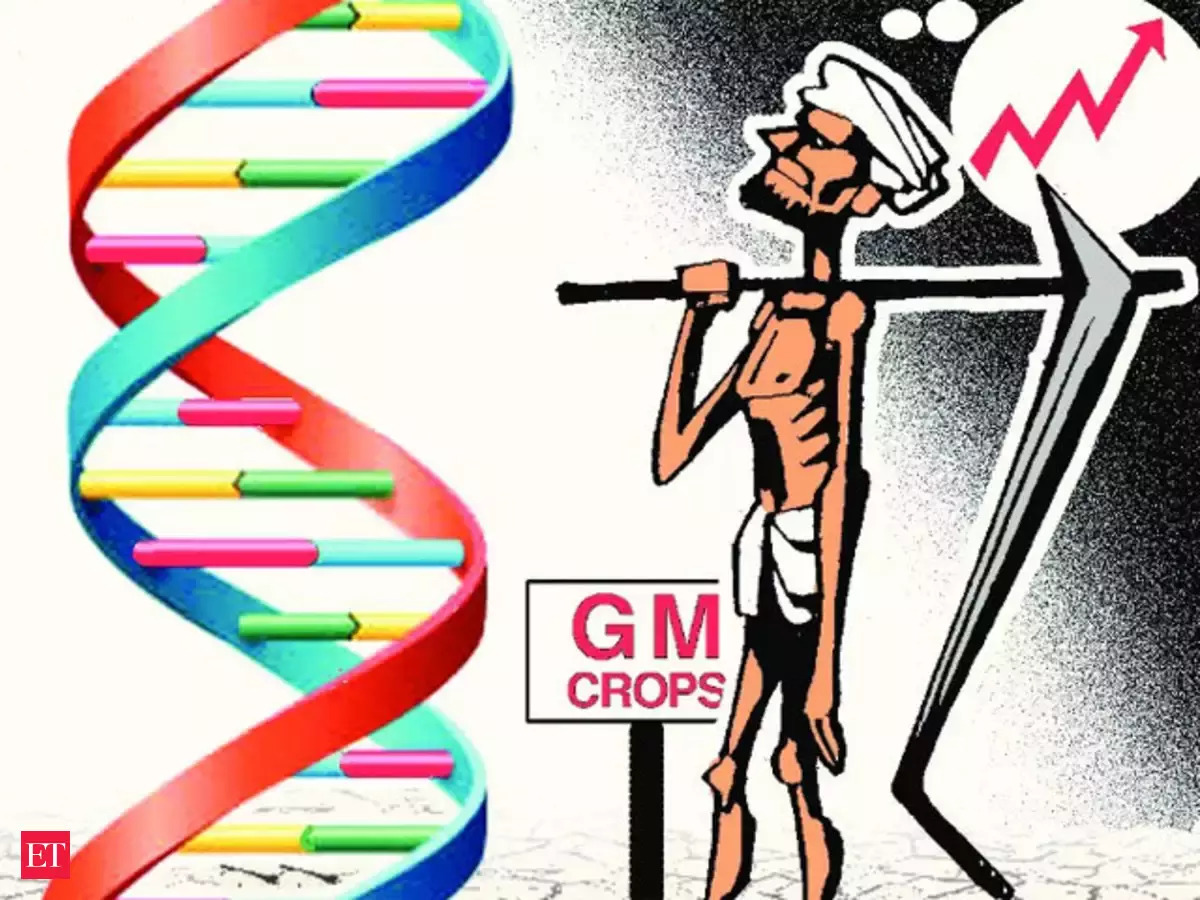Recently, the debate surrounding genetically modified (GM) foods was reopened when farmers in Akola, Maharashtra planted HTBt cotton seeds in an act of civil disobedience. Despite the continual outcry from farmers, our government prefers to ignore the subject, constantly shrouding it in veils of technicality and ‘no comments’. But the debate cannot be swept under the rug, as artificially modified food is here to stay. Almost 90% of the ingredients we use today are ‘modded’. What goes into our food, is as important as knowing what we put into our bodies.
The dominant narrative has been concerned with GM foods’ effects on human health, ecology and where humanity is headed as a whole. No long-term studies exist, and the answers to these questions remain uncertain.
What is certain however is that genetic modification has the potential to revolutionize our agriculture, markets and our scientific understanding. Every genetic modification is different – be it disease-resistant wheat, square tomatoes or purple weed – some GMs are healthy, and others are not. Serious harm, however, comes from the existing infrastructure of patent rights in genetically modified organisms (GMOs).
Patent laws (in theory) promote innovation in a market, by rewarding a patent-holder with exclusive rights to use their invention. Through a simple law from 1930s America, patent laws ensured that an inventor had legal ownership of his intellectual property:
“Whoever invents or discovers any new and useful process, machine, manufacture, or composition of matter, or any new and useful improvement thereof, may obtain a patent therefore”.
What goes unseen are the effects of monopolisation, that stem from patent enforcement. Take the case of Monsanto’s patented ‘suicide seed’ technology – second-generation seeds from such plants are unusable. This makes it not only futile but illegal for farmers to gather seeds for another planting. Monsanto had infamously sued farmers who discovered GM corn or GM soy sprouting on their land after the wind carried their seeds over from neighbouring fields. Plant patents laws meant that these farmers were hit by a double whammy – they effectively violated Monsanto’s patent, while inadvertently cross-pollinating their own ‘non-suicide’ crop with sterile genes.
More importantly, no corporation or scientist can ever work on the fertility gene for corn, without Monsanto’s permission. This access is usually obtained through a patent licence, which imposes restrictive terms and comes at a prohibitive cost. In effect, no individual can do the opposite and rework GM corn, except Monsanto, which now has no incentive to do so.
Patent laws create an overwhelmingly negative effect on genetic modification and on the potential benefits it holds.
A snapshot of patent misuse can be found in the discovery of disease-resistant GM rice. A gene sequence was discovered by one Dr. Pamela Ronald at UC-Davis, which meant that rice could potentially be resistant to all forms of Asian blight disease. Days after their patent filing, multinational food corporation Pioneer offered to license the gene. However, no work ever began on commercialisation of blight-resistant rice. Disease resistance, it turned out, does not possess the same attractions for multinational food producers, perhaps because the profit margins could never compare to Roundup Ready corn. By licensing the patent, Pioneer, instead of commencing production, ensured no competitor could market and launch a workable version of GM rice.
Dr. Ronald affected her own form of patent protests by making the science behind blight-resistance freely available. Disease-resistant rice, however, is still off the shelves, as few developing nations possess the equipment and expertise to sponsor its commercial development. Many scientists agree that patent laws stand in the way of their research, as innovations become the intellectual property of the company that owns the lab where the research took place. The right to own a product of your intellect sounds like a great thing – unless it is vicariously owned by someone whose intellect had no role to play. It’s akin to a teacher getting a scholarship because you aced your exams.
The US troubles of GM monopolisation are yet to visit Indian shores, by virtue of Section 3(j) of the Indian Patents Act which exclusively bars patenting of GMOs. Indian patent laws are rightly criticized for not being market-friendly. Nonetheless, with the signing of the TRIPS Agreement in 2001, the Indian Parliament enacted the Protection of Plant Varieties and Farmers’ Rights Act (PVFRA), which in effect extends some protection to GM (‘transgenic’) plant varieties. Currently shrouded in technicality and regulatory mechanisms, India has veritably denied BigAg a market share, by refusing to let the market operate. Concern over patent abuse was part of the reason that led governments to stall GM use altogether. But do the ends justify the means?
This move has denied our already reeling agricultural sector the numerous benefits that can be brought by GM innovation. Drought-affected farmers continue to agitate against approvals for high-yielding, low-cost BT crops. Meanwhile, by sitting on approvals our government robs the Indian farmer of his livelihood.
India’s paranoia of genetic modification is apparent and is reflective of the ‘banning’ mentality classic to protectionist governance. Rather than aiming to mitigate the possible harm of an activity, we choose to ban it so it can never possibly do any good either. It’s a small miracle that we haven’t banned agricultural practice altogether, given the number of suicides it leads to. The objectives of our laws and policies need to allow us to utilize the potential in a particular technology while mitigating its possible harms.
Read more about GM Crops: https://spontaneousorder.in/farmers-not-activists-prove-the-case-for-genetically-modified-brinjal/
Post Disclaimer
The opinions expressed in this essay are those of the authors. They do not purport to reflect the opinions or views of CCS.






